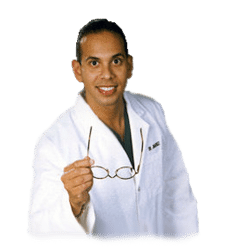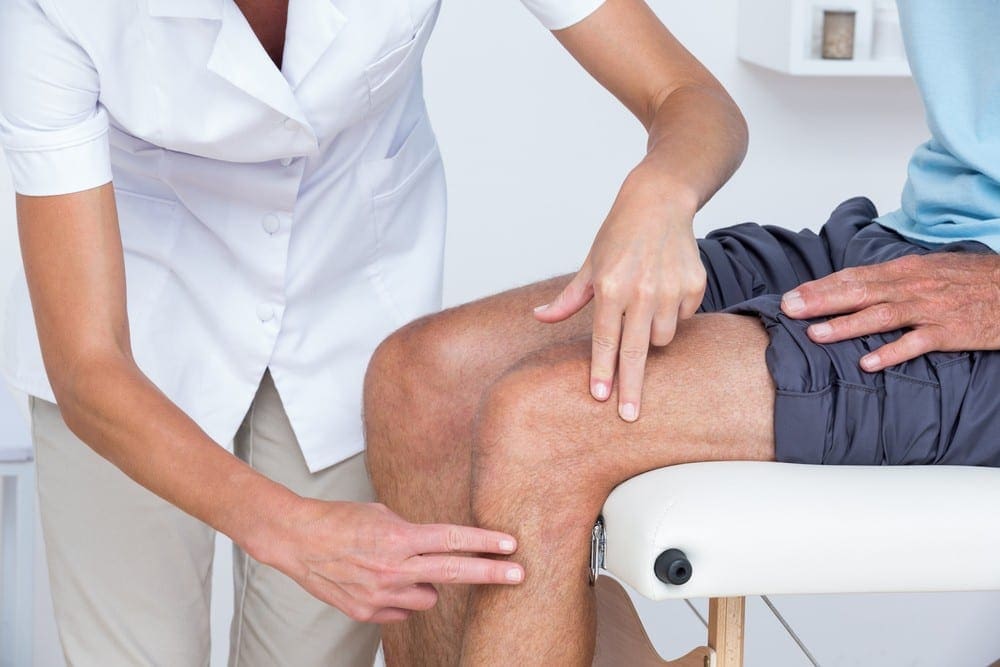A healthcare professional may refer you to a physical therapist to help you relieve your sciatica. Physical therapy includes both passive and active treatments. Passive treatments help unwind you and your body. These ultimately prepare your body for therapeutic exercises, which are the active treatments commonly utilized as a part of physical therapy.
Your physical therapist can give you passive treatments such as:
- Deep tissue massage: This procedure targets chronic muscle stress which can be compressing or irritating your sciatic nerve and its associated nerve roots. The physical therapist uses direct friction and pressure to attempt to release the tension in your soft tissues, such as the tendons, ligaments and muscles.
- Hot and cold therapies: By employing heat, the physical therapist seeks to get more blood to the target region because an increased blood circulation brings more oxygen and nutrients to the affected area. By way of instance, a heating pack placed on your piriformis muscle may help to reduce muscle spasms that could be causing your sciatica. Cold therapy, on the other hand, slows down blood flow, helping to decrease inflammation, muscle spasms, and pain. Your physical therapist will alternate between hot and cold therapies in order to achieve the desired results.
- TENS (transcutaneous electric nerve stimulation): It may even be used at home, if your physical therapist thinks it is necessary. A machine stimulates your muscles through a variety of safe intensities of electric current. TENS helps decrease muscle spasms, and it might increase your body’s production of endorphins, the body’s natural painkillers. The TENS equipment your physical therapist utilizes is larger than the “at-home” usage system. Whether big or small, a TENS device may be an essential treatment for sciatica and its associated symptoms.
- Ultrasound: Ultrasound sends sound waves deep in your muscle tissues and makes a gentle heat that enhances circulation and helps to speed up recovery. Greater circulation can help to reduce muscle spasms, cramping, swelling, stiffness, and pain.
In the active part of physical therapy, your physical therapist will teach you various exercises to help treat your sciatica. Your physical therapy’s treatment program is individualized, taking into account your overall health and wellness as well as your medical history. It might consist of strengthening exercises, aerobic conditioning, and movements to increase endurance and range of movement.
Physical therapy might be part of a comprehensive sciatica treatment plan prescribed by your healthcare professional. Aside from receiving physical therapy for your sciatica, or sciatic nerve pain, the following list includes other treatment options which are often considered when discussing the best treatment options for your source of sciatica symptoms. These treatments include:
- Alternative treatments, such as acupuncture;
- Chiropractic care;
- Drugs and/or medications; and
- Surgery
If necessary, your physical therapist may teach you how to fix your posture and integrate ergonomic principles into your everyday activities. This will be done in order to work on preventing future episodes of sciatica. Of the list of treatment options to help treat sciatica, chiropractic care and physical therapy are similar to each other and may involve common treatment modalities. However, a chiropractor uses spinal adjustments and manual manipulations to relieve symptoms of sciatica by carefully restoring the original alignment of the spine and reducing spinal stress and tension.

Contents
Dr. Alex Jimenez’s Insight
As its previously been addressed, because sciatica can occur due to a variety of injuries and/or aggravated conditions, a proper diagnosis followed by the best treatment option for the patient’s source of their symptoms is key for overall improvement and prevention of further episodes of sciatic nerve pain. Among the various types of treatment, chiropractic care and physical therapy are popular alternative treatment approaches which help treat sciatica, without the need for drugs and/or medications or surgical interventions. Chiropractic care focuses on correcting the alignment of the spine through the use of spinal adjustments and manual manipulations in order to release tension on the spine and improve sciatic nerve pain.
Chiropractic Care for Sciatica
Chiropractic care is a well-known alternative treatment option which is regularly used to treat sciatica. Proper diagnosis of sciatica Is essential before considering any of the above treatment modalities. Because there are lots of disorders that cause sciatica, the chiropractor’s first step towards treating sciatica would be to determine what’s causing the patient’s relapse. Forming a diagnosis involves a thoughtful review of the patient’s medical history as well as a physical and neurological evaluation.
Diagnostic testing includes x-rays, MRI, CT scans and/or electrodiagnostic tests (nerve conduction speed, electromyography). These examinations and evaluations help to detect potential contraindications to spinal adjustments and manual manipulations along with other chiropractic alternative treatment options. The aim of chiropractic care is to help the human body heal itself. Chiropractic care is noninvasive (non-surgical) and drug-free.
The type of chiropractic care provided depends on the reason for the individual’s sciatica. A sciatica treatment program might include several distinct therapies like ice/cold treatments, ultrasound, TENS, (similar to those used in physical therapy) and spinal adjustments and manual manipulations. Spinal adjustments and manual manipulations differ from a swift high velocity push to those that combine minimal pressure and gentle force. Mastery of every method is an art which requires great precision and skill. Spinal adjustments and manual manipulations are the treatment modalities that differentiate chiropractic care from other medical disciplines.
However, sciatica can be brought on by other disorders beyond the scope of chiropractic care. If the chiropractor determines that the patient’s source of their symptoms requires treatment from a different type of doctor, then the patient is referred to another healthcare professional. In some instances, the chiropractor may continue to treat the patient and also co-manage the patient’s care with another healthcare professional.
The scope of our information is limited to chiropractic as well as to spinal injuries and conditions. To discuss the subject matter, please feel free to ask Dr. Jimenez or contact us at 915-850-0900 .
Curated by Dr. Alex Jimenez
Additional Topics: Sciatica
Sciatica is medically referred to as a collection of symptoms, rather than a single injury and/or condition. Symptoms of sciatic nerve pain, or sciatica, can vary in frequency and intensity, however, it is most commonly described as a sudden, sharp (knife-like) or electrical pain that radiates from the low back down the buttocks, hips, thighs and legs into the foot. Other symptoms of sciatica may include, tingling or burning sensations, numbness and weakness along the length of the sciatic nerve. Sciatica most frequently affects individuals between the ages of 30 and 50 years. It may often develop as a result of the degeneration of the spine due to age, however, the compression and irritation of the sciatic nerve caused by a bulging or herniated disc, among other spinal health issues, may also cause sciatic nerve pain.

EXTRA IMPORTANT TOPIC: Chiropractor Sciatica Symptoms
MORE TOPICS: EXTRA EXTRA: El Paso Back Clinic | Back Pain Care & Treatments
Professional Scope of Practice *
The information on "Physical Therapy for Sciatica in El Paso, TX" is not intended to replace a one-on-one relationship with a qualified health care professional or licensed physician and is not medical advice. We encourage you to make healthcare decisions based on your research and partnership with a qualified healthcare professional.
Blog Information & Scope Discussions
Welcome to the wellness blog of El Paso Back Clinic, where Dr. Alex Jimenez, DC, FNP-C, a board-certified Family Practice Nurse Practitioner (FNP-C) and Chiropractor (DC), presents insights on how our team is dedicated to holistic healing and personalized care. Our practice aligns with evidence-based treatment protocols inspired by integrative medicine principles, similar to those found on dralexjimenez.com, focusing on restoring health naturally for patients of all ages.
Our areas of chiropractic practice include Wellness & Nutrition, Chronic Pain, Personal Injury, Auto Accident Care, Work Injuries, Back Injury, Low Back Pain, Neck Pain, Migraine Headaches, Sports Injuries, Severe Sciatica, Scoliosis, Complex Herniated Discs, Fibromyalgia, Chronic Pain, Complex Injuries, Stress Management, Functional Medicine Treatments, and in-scope care protocols.
Our information scope is limited to chiropractic, musculoskeletal, physical medicine, wellness, contributing etiological viscerosomatic disturbances within clinical presentations, associated somato-visceral reflex clinical dynamics, subluxation complexes, sensitive health issues, and functional medicine articles, topics, and discussions.
We provide and present clinical collaboration with specialists from various disciplines. Each specialist is governed by their professional scope of practice and their jurisdiction of licensure. We use functional health & wellness protocols to treat and support care for the injuries or disorders of the musculoskeletal system.
Our videos, posts, topics, subjects, and insights cover clinical matters, issues, and topics that relate to and directly or indirectly support our clinical scope of practice.*
Our office has reasonably attempted to provide supportive citations and has identified the relevant research studies or studies supporting our posts. We provide copies of supporting research studies available to regulatory boards and the public upon request.
We understand that we cover matters that require an additional explanation of how they may assist in a particular care plan or treatment protocol; therefore, to discuss the subject matter above further, please feel free to ask Dr. Alex Jimenez, DC, APRN, FNP-BC, or contact us at 915-850-0900.
We are here to help you and your family.
Blessings
Dr. Alex Jimenez, DC, MSACP, APRN, FNP-BC*, CCST, IFMCP, CFMP, ATN
email: coach@elpasofunctionalmedicine.com
Licensed as a Doctor of Chiropractic (DC) in Texas & New Mexico*
Texas DC License # TX5807
New Mexico DC License # NM-DC2182
Licensed as a Registered Nurse (RN*) in Texas & Multistate
Texas RN License # 1191402
ANCC FNP-BC: Board Certified Nurse Practitioner*
Compact Status: Multi-State License: Authorized to Practice in 40 States*
Graduate with Honors: ICHS: MSN-FNP (Family Nurse Practitioner Program)
Degree Granted. Master's in Family Practice MSN Diploma (Cum Laude)
Dr. Alex Jimenez, DC, APRN, FNP-BC*, CFMP, IFMCP, ATN, CCST
My Digital Business Card









